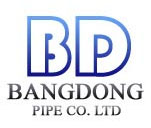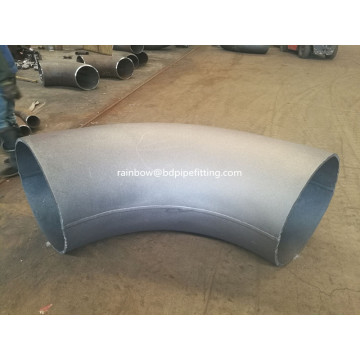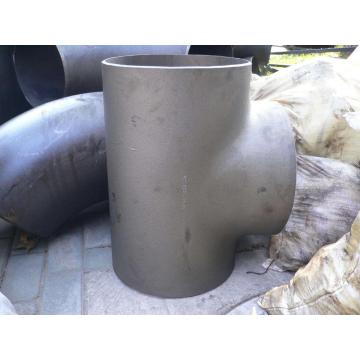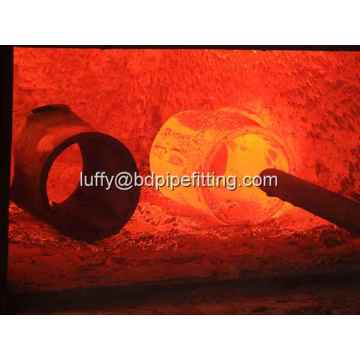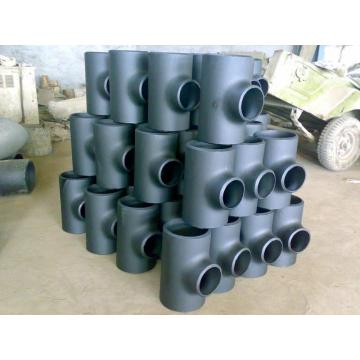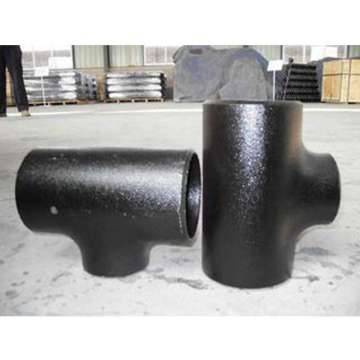
En10253-1 Fitting straight Tee reducing Tee
- Payment Type:
- L/C, T/T
- Incoterm:
- FOB, CFR, CIF
- Min. Order:
- 1 Piece/Pieces
- Min. Order:
- 1 Piece/Pieces
- Delivery Time:
- 15 Days
- Transportation:
- Ocean, Land, Air, DHL/TNT
- Port:
- Tianjin New Port, Zhengzhou Train Station, Beijing Air Port
Your message must be between 20 to 2000 characters
Contact Now| Place of Origin: | Cangzhou,China |
|---|---|
| Productivity: | 1000pcs/month |
| Supply Ability: | 1000pcs/month |
| Payment Type: | L/C,T/T |
| Incoterm: | FOB,CFR,CIF |
| Certificate: | ISO/API/CE |
| HS Code: | 73079300 |
| Transportation: | Ocean,Land,Air,DHL/TNT |
| Port: | Tianjin New Port,Zhengzhou Train Station,Beijing Air Port |
Standard there are 2 possibilities, on behalf of the equal tee and reducing tee. The equal tee (or straight tee) is used as the branch has the same diameter as the run-pipe. The reducing tee is used as the branch has a smaller diameter as the run-pipe.
Available of En10253-1 Fitting and En10253-2 Fitting

The primary purpose of a Tee is to make a 90° branch from the main run of pipe.
Dimensions and Standards
When we talk about a tee NPS 3, a equal or straight tee is intended. With a tee NPS 3 x 2 a reducing tee is intended. Although, officially a reducing tee will be indicated by 3 diameters, namely 3 x 3 x 2 (A x B x C). The A & B measure stands for the Nominal Pipe Size of Run-Pipe, C measure stands for Nominal Pipe Size of Outlet.
This designation actually is superfluous, but comes from the time that tees were available in 3 different ends of diameters, such as
4 x 3 x 2 (A x B x C). In this implementation of course it is necessary, to specify 3 different sizes.
That kind of tees is probably no longer available. Applying a equal tee with a concentric or eccentric reducer is now the usual practice.
A straight or equal buttwelding Tee is available for all common diameters.
A Reducing Tee not, because many diameters are not produced, or can not be produced.
As an example: a reducing tee NPS 6 x 4 is a standard item for most suppliers, but a reducing tee NPS 16 x 2 is probably not available by any supplier.
It would also not economical to use a NPS 16 tee with a NPS 2 outlet; in such situations a Branch Fitting will be used or a Branch Connection will be made.
In addition to the defined tees, there are straight and reducing crosses.
Straight crosses are generally stock items, reducing crosses are often difficult to obtain.
I have never used that tees and I have they never seen in practice, at least not in petro and chemical industry. They will be used where space is limited, by revision work, in shipping industry et cetera.
Wall thickness Tee

By the shape of a tee, the wall thickness can be a critical item. ASME B16.9 only standardizes the end-to-end dimensions, center-to-end dimensions and some "squareness" dimensional tolerances.
The wall thickness at the weld line location even is standardized, but not through the rest of the fitting. The standard states that the minimum tolerance will be within 12.5% of the minimum ordered wall thickness of the pipe. A maximum tolerance is specified only at the ends of the fitting.
Many providers of welding tees (and elbows) provide one schedule greater thickness so that sufficient wall thickness, after forming, remains. In Tee's, the crotch radius (T) varies from one manufacturer to another, but some establish itself as a requirement, 1.3 times the wall thickness to maintain the crotch.
Crotch of a buttweld tee
Standard there are 2 possibilities, on behalf of the equal tee and reducing tee. The equal tee (or straight tee) is used as the branch has the same diameter as the run-pipe. The reducing tee is used as the branch has a smaller diameter as the run-pipe.
Available of En10253-1 Fitting and En10253-2 Fitting

The primary purpose of a Tee is to make a 90° branch from the main run of pipe.
Dimensions and Standards
When we talk about a tee NPS 3, a equal or straight tee is intended. With a tee NPS 3 x 2 a reducing tee is intended. Although, officially a reducing tee will be indicated by 3 diameters, namely 3 x 3 x 2 (A x B x C). The A & B measure stands for the Nominal Pipe Size of Run-Pipe, C measure stands for Nominal Pipe Size of Outlet.
This designation actually is superfluous, but comes from the time that tees were available in 3 different ends of diameters, such as
4 x 3 x 2 (A x B x C). In this implementation of course it is necessary, to specify 3 different sizes.
That kind of tees is probably no longer available. Applying a equal tee with a concentric or eccentric reducer is now the usual practice.
A straight or equal buttwelding Tee is available for all common diameters.
A Reducing Tee not, because many diameters are not produced, or can not be produced.
As an example: a reducing tee NPS 6 x 4 is a standard item for most suppliers, but a reducing tee NPS 16 x 2 is probably not available by any supplier.
It would also not economical to use a NPS 16 tee with a NPS 2 outlet; in such situations a Branch Fitting will be used or a Branch Connection will be made.
In addition to the defined tees, there are straight and reducing crosses.
Straight crosses are generally stock items, reducing crosses are often difficult to obtain.
I have never used that tees and I have they never seen in practice, at least not in petro and chemical industry. They will be used where space is limited, by revision work, in shipping industry et cetera.
Wall thickness Tee

By the shape of a tee, the wall thickness can be a critical item. ASME B16.9 only standardizes the end-to-end dimensions, center-to-end dimensions and some "squareness" dimensional tolerances.
The wall thickness at the weld line location even is standardized, but not through the rest of the fitting. The standard states that the minimum tolerance will be within 12.5% of the minimum ordered wall thickness of the pipe. A maximum tolerance is specified only at the ends of the fitting.
Many providers of welding tees (and elbows) provide one schedule greater thickness so that sufficient wall thickness, after forming, remains. In Tee's, the crotch radius (T) varies from one manufacturer to another, but some establish itself as a requirement, 1.3 times the wall thickness to maintain the crotch.
Crotch of a buttweld tee
Common type of pipe tee
A pipe tee is a type of fitting that has a T shape and is used to join two or more plumbing pipes.
-
Equre Tee (or straight tee), means the branch diameter of this tee is same with the main pipe (Run pipe) diameter of this tee.
-
Reducing Tee is a type of pipe fitting in which the branch port size is smaller than the ports of the run.
-
Barred Tee is used in pipelines that are pigged.
-
Lateral Tee has a 45 degree branch from a pipeline.
-
Pipe Cross is a fitting that used in the place where four pipes meet with the same diameter include:
-
Reducing cross used for connecting four pipes, the main pipes with the same size, but the dimensions of the branch diameter is smaller than the main pipes.
-
Equal cross in the place where four pipes meet with the same diameter.
-
Forged Socket Weld Equal Tee are pipe fittings that be formed mainly by forging.
Carbon steel: ASTM/ASME A234wpb-WPC
Alloy steel: ASTM/ASME A234 WP 1-WP 12-WP 11-WP 22-WP 5-WP 91-WP 911
Stainless steel: ASTM/ASME A403 WP 304-304L-304H-304LN-304N

ASTM/ASME A403 WP 316-316L-316H-316LN-316N-316Ti
ASTM/ASME A403 WP 321-321H ASTM/ASME A403 WP 347-347H
Low temperature steel: ASTM/ASME A402 WPL 3-WPL 6
High performance steel: ASTM/ASME A860 WPHY60 42-46-52--65-70
Size range: 1/2 to 72 inches
Pressure: SCH5 to SCH160
Related products
Astm A312 45 Degree Lateral Tee
Astm A197 Galvanized Steel Pipe Cross
Astm A351 Barred Tee
- Reducing cross used for connecting four pipes, the main pipes with the same size, but the dimensions of the branch diameter is smaller than the main pipes.
- Equal cross in the place where four pipes meet with the same diameter.
Alloy steel: ASTM/ASME A234 WP 1-WP 12-WP 11-WP 22-WP 5-WP 91-WP 911
Stainless steel: ASTM/ASME A403 WP 304-304L-304H-304LN-304N

ASTM/ASME A403 WP 321-321H ASTM/ASME A403 WP 347-347H
Low temperature steel: ASTM/ASME A402 WPL 3-WPL 6
High performance steel: ASTM/ASME A860 WPHY60 42-46-52--65-70
Pressure: SCH5 to SCH160
Related Keywords

